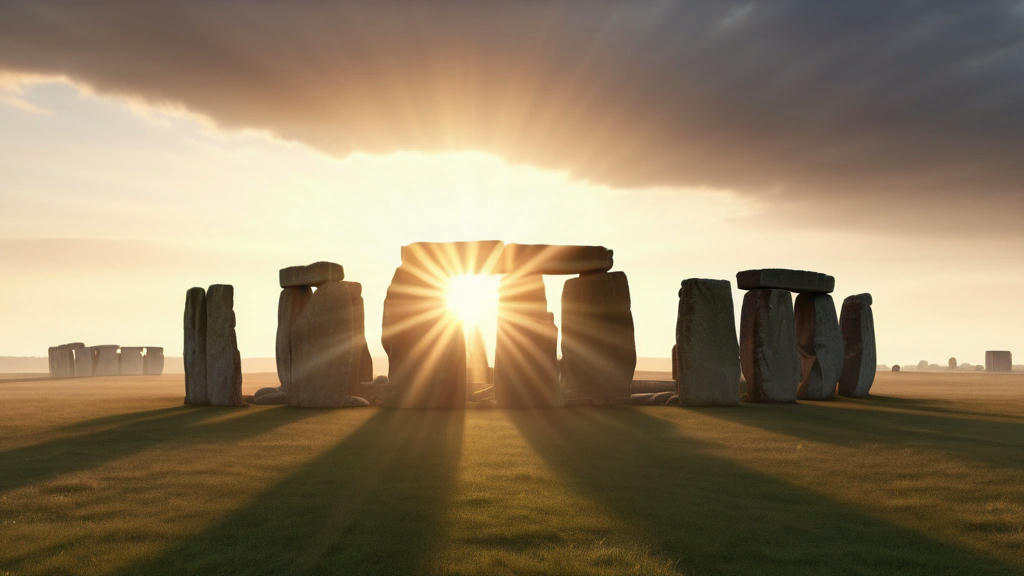The summer solstice, a celestial event that has captivated humanity for millennia, marks the longest day and the shortest night of the year. This astronomical phenomenon, occurring around June 21st in the Northern Hemisphere, is not just a mere alignment of the Earth and the Sun; it is a moment steeped in cultural significance, ancient rituals, and natural wonder. As the Sun reaches its highest point in the sky, the world is bathed in an abundance of light, symbolizing growth, renewal, and the eternal dance of the cosmos.
The Science Behind the Solstice
The summer solstice occurs when the Earth's axial tilt is most inclined towards the Sun, resulting in the Sun appearing at its highest point in the sky at noon. This tilt, approximately 23.5 degrees, is responsible for the changing seasons as the Earth orbits the Sun. During the solstice, the Sun's rays strike the Tropic of Cancer directly, creating the longest day of the year in the Northern Hemisphere.
This astronomical event has been meticulously observed and celebrated by various cultures throughout history. From the ancient Egyptians who built the Great Pyramids to align with the solstice sunrise, to the Druids who gathered at Stonehenge to mark the occasion, the summer solstice has always been a time of reverence and celebration.
Cultural Significance and Ancient Rituals
The summer solstice has inspired a myriad of traditions and rituals across different cultures. In ancient times, it was seen as a powerful moment when the veil between the physical and spiritual worlds was thinnest, allowing for a deeper connection with the divine.
Stonehenge: A Monument to the Solstice
One of the most iconic solstice celebrations takes place at Stonehenge in England. This prehistoric monument, with its massive stone circles, is believed to have been constructed to align with the solstice sunrise. Thousands of people gather at Stonehenge every year to witness the Sun rise above the Heel Stone, casting its first rays into the heart of the stone circle. This event is a testament to the ingenuity and astronomical knowledge of the ancient builders.
Midsummer Celebrations
In Scandinavian countries, the summer solstice is celebrated as Midsummer, a festival that includes dancing around maypoles, singing traditional songs, and lighting bonfires. These festivities are deeply rooted in pagan traditions that honor the Sun and the fertility of the Earth. In Sweden, Midsummer is one of the most important holidays, second only to Christmas, and is marked by feasting on herring, potatoes, and strawberries.
Inti Raymi: The Festival of the Sun
In the Andes, the Inca civilization celebrated Inti Raymi, the Festival of the Sun, to honor Inti, the Sun god. This grand festival, held in Cusco, Peru, involved elaborate ceremonies, dances, and sacrifices to ensure a bountiful harvest. Today, Inti Raymi is reenacted with vibrant parades and performances, drawing thousands of visitors from around the world.
The Solstice in Modern Times
While ancient rituals and traditions continue to be observed, the summer solstice also holds significance in contemporary society. It is a time for reflection, renewal, and connection with nature. Many people use this day to set intentions, meditate, and celebrate the abundance of light and life.
Solstice Yoga and Meditation
In recent years, the practice of yoga and meditation during the summer solstice has gained popularity. Large gatherings, such as the annual Solstice in Times Square event in New York City, bring together thousands of yoga enthusiasts to practice under the open sky. This communal experience fosters a sense of unity and mindfulness, aligning the body and spirit with the rhythms of nature.
Environmental Awareness and Sustainability
The summer solstice also serves as a reminder of our connection to the Earth and the importance of environmental stewardship. Many organizations use this day to promote sustainability initiatives, such as tree planting, clean-up drives, and educational programs about climate change. By honoring the solstice, we are reminded of our responsibility to protect and preserve the natural world for future generations.
The Solstice and Personal Reflection
Beyond the communal celebrations and environmental initiatives, the summer solstice offers a unique opportunity for personal reflection and growth. As the Sun reaches its zenith, it illuminates not only the world around us but also our inner selves. This moment of peak sunlight can inspire us to examine our lives, set new goals, and embrace the potential for transformation.
Embracing Light and Shadow
The solstice is a time to embrace both the light and shadow within us. Just as the Sun casts long shadows even at its highest point, we too must acknowledge and integrate the darker aspects of our being. This process of self-discovery and acceptance can lead to greater wholeness and balance.
Setting Intentions and Manifesting Dreams
Many people use the energy of the solstice to set intentions and manifest their dreams. By focusing on what we wish to create and achieve, we can harness the power of the Sun to bring our visions to life. Whether through journaling, vision boards, or meditation, the solstice is a potent time for planting the seeds of our future.
Conclusion: The Eternal Dance of Light
The summer solstice is more than just an astronomical event; it is a celebration of life, light, and the enduring connection between humanity and the cosmos. As we gather to honor this moment, we are reminded of the intricate dance of the Earth and the Sun, a dance that has been ongoing for billions of years. In this dance, we find not only the rhythms of the natural world but also the rhythms of our own lives.
By embracing the solstice, we tap into a wellspring of ancient wisdom and contemporary insight, allowing us to navigate the cycles of light and darkness with grace and intention. As the longest day gives way to the gradual return of night, we carry with us the warmth and illumination of the solstice, a beacon guiding us through the ever-turning wheel of the year.


